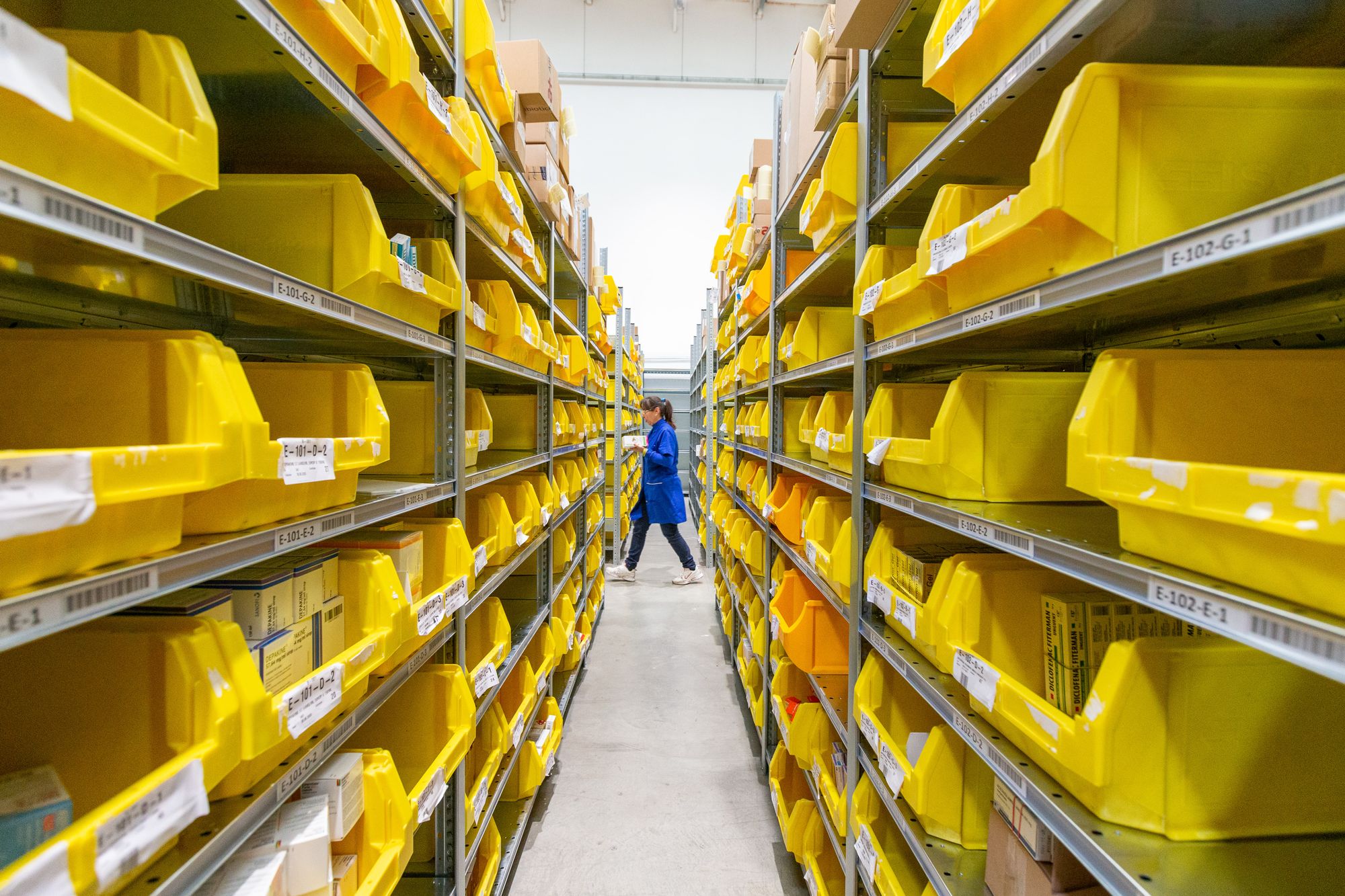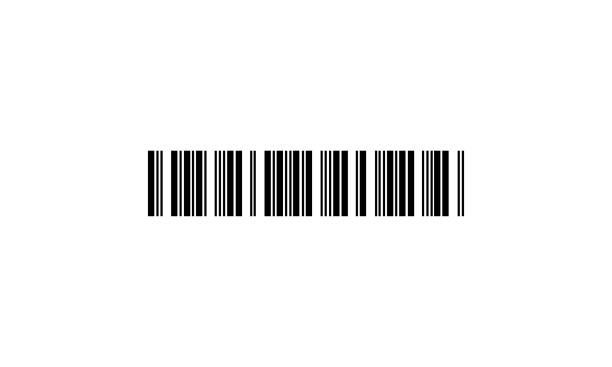Are you a business owner struggling with perishable inventory management? Do you want to have a better understanding of it so that you can optimize its management and increase your productivity and profitability?
If your answer to either or both of these questions is yes, then this article is for you. Perishable inventory includes raw materials and finished products that lose their value over time, and eventually become worthless.

Some of the most popular industries dealing with perishable inventories are the food and beverage industry, the medical industry, cosmetic manufacturers, and so on. While these industries work with products and ingredients that expire, perishable inventory also applies to technological products.
For example, rapid advancements in computer processing technology mean that the components inside your computer will become obsolete after a certain period of time.
Thus, considering the overall challenges that surround perishable inventory and industries having to deal with them, it is necessary that you have a complete understanding of it.
This article will help you by covering the following topics:
- What is Perishable Inventory?
- Which Industries have Perishable Inventory?
- Why is Tracking Perishable Inventory Important?
- 10 Tips and Strategies for Managing Perishable Inventory
- 5 Benefits of Implementing an Inventory Shelf Life Management System
- How can Deskera Help You with Perishable Inventory Management?
- Key Takeaways
- Related Articles
What is Perishable Inventory?
Perishable inventory or perishable stock refers to the products that expire or lose value over time, thereby becoming worthless over time. There are three types of perishability being referred to here:
- When product quality gradually perishes. For example, a market research report becomes less relevant and, therefore, less valuable over time. Or a floral bouquet that slowly dries up.
- When the product perishes instantly. For example, the value of a ticket for a seat on an airplane after the plane takes off.
- When the product perishes and sees a decline in its value, like a step function. For example, a computer chip that goes from state-of-the-art to good to usable to completely obsolete as successive generations get released.
Thus, the unique risk associated with perishable inventory is that the unsold products may expire with no residual value, leading to the entire investment and an opportunity to be lost.
Also, as is evident, some forms of perishable inventory are easily recognized and intuitive, such as food products with printed expiration dates that are never more than a few weeks away. Conversely, there are other forms of perishable inventory that are not so obvious.
While perishable inventory and perishable stock tend to be used interchangeably, they are not always equivalent. This is because perishable stock tends to refer more specifically to perishable goods that can be stocked.
For example, floral bouquets and yogurt are both perishable inventory and stock, while rounds of golf and nights in a hotel are perishable inventory but cannot be stocked in a refrigerated warehouse like yogurt.
Also, as you might have realized, some are not even perishable inventory in the traditional sense. For instance, in the case of a theater seat, it is the theater seat that the buyer wants to buy before the curtain goes up, and not the ticket.
On the other hand, even durable goods which are considered non-perishable can lose their value over time due to degradation or obsolescence.
For example, why is a loaf of bread considered perishable, while modern clothes washing machine is not? When both will become unsellable a decade or two from now, though the bread will lose its value much sooner.
Thus, there is no set of rules or cutoff determining which product is perishable or not. This is because there are degrees of perishability. Thus, the less able your business is to carry inventory forward from one period to another (be it a year, quarter, month, or day), the more perishable it is.
Also, to be able to deal appropriately with perishable inventory, it is crucial to identify that some perishability occurs naturally like it is unsafe to eat expired food. In comparison, some perishability occurs artificially, like cars that take a disproportionate hit on their values when their newer model is released in the market.
Which Industries have Perishable Inventory?
Some of the industries which have perishable inventory are:
- Agriculture is one of the most significant industries with perishable goods. This includes crops such as fruits, vegetables, and grains that are harvested and have a limited shelf life. Farmers need to find ways to quickly get their goods to market or risk losing money as the products spoil.
- Food processing is another industry with many perishable products. Dairy products, baked goods, and prepared meals are all examples of items that need to be sold quickly or risk going bad. Companies must take care to package and store their products properly to ensure minimal loss.
- The seafood industry is another sector with perishable items. Fish, shellfish, and other aquatic products are especially vulnerable to spoilage and must be handled properly. Companies must take extra steps to ensure the goods are delivered in a timely manner to avoid spoilage.
- The floral industry is another industry with perishable items. Flowers have a limited shelf life and must be sold quickly or risk being unusable. Companies must be able to coordinate with wholesalers and retailers to ensure that their goods are sold within a reasonable timeframe.
- The meat industry also contains many perishable items. Beef, pork, poultry, and other meats have a limited shelf life and must be sold quickly or risk spoiling. Companies must take extra steps to ensure that their goods are stored and transported properly to avoid spoilage.
- The produce industry is another sector with perishable items. Fruits and vegetables have a limited shelf life and must be sold quickly or risk going bad. Companies must take extra steps to ensure that their goods are stored and transported properly to avoid spoilage.
- The beverage industry is another sector with perishable items. Beer, wine, and other alcoholic beverages have a limited shelf life and must be sold quickly or risk going bad. Companies must take extra steps to ensure that their goods are stored and transported properly to avoid spoilage.
- The pharmaceutical industry is another sector with perishable items. Medicines and other medical goods have a limited shelf life and must be sold quickly or risk going bad. Companies must take extra steps to ensure that their goods are stored and transported properly to avoid spoilage.
- The dairy industry is another sector with perishable items. Cheese, yogurt, and other dairy products have a limited shelf life and must be sold quickly or risk going bad. Companies must take extra steps to ensure that their goods are stored and transported properly to avoid spoilage.
- The egg industry is another sector with perishable items. Eggs have a limited shelf life and must be sold quickly or risk going bad. Companies must take extra steps to ensure that their goods are stored and transported properly to avoid spoilage.
- The technology industry also has perishable items. This is because as new advancements are made in technology, the older items lose their value and even their client base.
Why is Tracking Perishable Inventory Important?
- Tracking of perishable inventory helps to maintain accurate records of stock levels. This ensures that the right amount of stock is available when needed and that wastage of products and resources is minimized. It thus helps in keeping a check on your business expenses.
- It helps to monitor the quality of perishable items and identify any expired stock. This helps to maintain a safe and hygienic environment, as well as ensure customer satisfaction. This encourages returning customers, as well as a positive brand image.
- Tracking of perishable inventory improves stock management by providing visibility of the demand and supply of items, enabling better forecasting and planning. This will thus help you in ensuring that you satisfy customers’ demands and therefore improve customer retention.
- Tracking of perishable inventory allows businesses to track the costs associated with items, such as transportation and storage fees, ensuring that the most cost-effective options are being used. It thus helps in increasing your net profit ratio.
- By tracking perishable inventory, businesses can identify inefficiencies in the supply chain and take corrective action to increase efficiency.
- Tracking of perishable inventory can help businesses to identify any discrepancies between the supply and demand of items, which can be addressed to avoid customer dissatisfaction.
- It helps to keep a record of any shipments and deliveries, ensuring that the goods arrive in a timely manner and that the customer is satisfied. This will improve your cash flow and also lead to strong customer loyalty.
- Tracking of perishable inventory can help to reduce the risk of theft and fraud, as any discrepancies can be quickly identified and addressed.
- It helps businesses to ensure that the food safety regulations and other relevant regulations as per your business are being complied with and that any potential risks are minimized. This thus reduces the additional expenses that might have been incurred due to product recalls, refunds, and exchanges.
- Tracking of perishable inventory allows businesses to identify any potential areas for improvement in the supply chain, helping them to remain competitive in the market.
- Tracking of perishable inventory will also help you determine your reorder points of inventory, as well as the safety stock levels that you should keep.
10 Tips and Strategies for Managing Perishable Inventory
While managing perishable inventory is crucial for the success of your business, it is an inventory management challenge because timing is so important in its management. This is because, in the case of perishable inventory, the threat of product spoilage is always looming.
Also, anything that costs your business time, be it miscalculation, miscommunication, delay, or some other adverse event, can threaten to wipe out your entire investment in a batch of products. This will thus have a huge negative impact on your net revenues.
Additionally, it is quite likely that as a business dealing in perishable inventory, you will be facing higher costs for storage and transportation. For example, refrigerated grocery products are more expensive to stock and move than those stored at room temperature. It thus leads to you requiring more working capital.
Thus, the challenge in managing perishable inventory lies in matching supply and demand not just in quantity, but also in time. Thus the ten tips and strategies that will help you manage your perishable inventory are:
FIFO
“First In, First Out” can refer to both an accounting method for determining valuations and an inventory management process. The assumption under either type of FIFO system is that the inventory leaves in the order in which it comes in.
Thus, from an accounting perspective, it means that the unsold inventory on the balance sheet is the most recently arrived inventory.
From an inventory management perspective, it means that among the functionally identical items that have the same SKU, the one that has been in stock for the longest time will be sold next.
Thus, FIFO works best when the expiration of your products is more gradual and more correlated with the order in which the units have arrived.
For example, if you are a business that sells computer chips, FIFO will be the easiest strategy for you to implement. This is because your product does not have a set expiration date as it will be technological progress that will be making your inventory units less valuable over time.
FEFO
Yours might be a business where FIFO alone is not sufficient for managing stock with respect to its expiration dates. Thus, FEFO, which is the “First Expiring, First Out” strategy, comes into play.
Managing your inventory by FEFO is very intuitive because the next unit that your business sells will be the one with the closest expiration date. This thus keeps the remaining shelf life or equivalent life of the remaining inventory as long as possible, thereby giving you maximum opportunity to sell each unit of your inventory before they expire.
Thus, FEFO works better when expiration is sudden and closer in. For example, if yours is a business that is selling consumable products with printed expiration dates, then adopting FEFO will be more beneficial to you, leading to higher returns on investment.
Inventory Tracking
Inventory tracking means keeping track of your inventory. This thus involves knowing what inventory you have, including:
- What is on its way in and out?
- How much of each type of inventory do you have?
- Where is each inventory unit stored?
- Basic information about each unit of inventory, for example, their expiration date, source, and so on.
- When are you expecting each inventory unit to be sold?
You must take note that some inventory tracking processes include payment tracking as well. This involves connecting financial records with the units bought and sold.
Thus, anytime something happens to a unit of inventory, it needs to be tracked. Considering the complexities of this task, it is necessary that you implement a high-quality inventory management technology that will do the inventory tracking on your behalf. Deskera MRP is an example of one such software.
In fact, implementing inventory management software will help you answer important questions in real time like:
- How much inventory expires in the next week?
- How many unexpired units can I expect to have in stock tomorrow?
- What number of inventory units should I expect to sell this week?
And so on.
All these insights will help you undertake marketing and promotional activities that will help you minimize your losses, improve your cash flow, recoup some of the cost of goods sold, and increase your gross profits. Additionally, it will also help you make better decisions.
Also, good inventory tracking will also help you identify problems early on, like errors in ordering, excessive inventory, or too less inventory, or even theft in inventory.
Inventory Auditing
In real life, everything that happens to inventory is not recorded through inventory tracking.
This is often because of human error, which leads to discrepancies either in data entry (for example, something that should have been entered into the tracking system is missed or entered with errors), or in execution (for example, a restaurant keeping track of liquor might have a theoretical number of shots per bottle of vodka, but it does not account for extra generous pour by the bartender, or a customer asking for a weaker drink).
Another cause for the discrepancy might be an inventory management system that is not designed to account for odd one-off happenings, or malicious, as in the case of theft or purposeful damage.
The solution to all these problems is regular inventory auditing. This involves examining your physical inventory, and comparing it to your records, and investigating any discrepancies to determine the cause.
Inventory auditing is vital for businesses having perishable inventory as it will help you identify wasteful mistakes early on, as well as help in identifying other problems like theft which leads to the actual inventory being lower than the theoretical inventory in the system, or cases where inventory has perished before the time due to storage issues for example.
Identifying all these possibilities is crucial to ensure that you undertake regular inventory auditing, thereby ensuring adequate supplies and tracking down process problems in supply chains and storage.
Demand Forecasting
Demand forecasting is one of the most valuable tools for managing your perishable inventory. This is especially important if you have food and beverage inventories where expirations can happen quickly, but restocking might take a while, leading to dissatisfied customers during demand fluctuations.
For instance, a restaurant usually cannot order ingredients when a big party walks in, it has to be prepared in advance for the same.
What will help you accurately forecast your demand and therefore have accurate demand planning is your data and experience. This will help you identify your busy times of year and week and also busy hours of the day. It will also help you identify special events that lead to an increase or decrease in demand.
Also, in addition to company-specific data, you should also use industry forecasts and knowledge of general trends. Then, combining all this information and insights together, you should make necessary adjustments to your business processes.
In fact, merging sales forecasts with inventory tracking and auditing will provide you with detailed guidance on how much to order from your suppliers to meet customer demand but also minimize waste.
You must keep in mind that the better you know your buyer personas and customers, the more accurately you will be able to predict what they will need.
Also, in such a scenario, your customers will also be able to give you notice in advance when things are changing, therefore letting you stay on top of the competition. This will lead to increased gross profits and improved business metrics.
Invest in Technology
For all the strategies discussed above, their implementation will become much easier, more powerful, and accurate if you invest in inventory management software like Deskera MRP.
This is because such a system will help you integrate and streamline your data from all the departments, keep them updated in real-time, increase end-to-end traceability and visibility, and automate several of your business processes.
Not only will this lead to better quality products, lowered manufacturing costs and inventory costs, and increased revenue and profits, but also more satisfied customers. Thus, implementing such a system will help you plan better from financial as well as operational standpoints.
Additionally, these systems will help you identify problems early on and then take corrective actions as required. This will help you maximize your productivity and profitability.
In fact, if your customer is trying to negotiate with you for a better price, then your inventory management system will also be able to tell you how many units might make sense to discount and how many of those units are far from expiration so that you can wait for a better offer on them.
Safety Stock
This is a concept that applies to all the businesses that are required to keep an inventory. It is an additional inventory that is kept over and above the predicted need for “just in case” scenarios. However, in the case of perishable inventory, this becomes riskier and less intuitive.
This is because, in the case of perishable inventory, retaining safety stock borders on deliberate waste, as it means that you are stocking units with the expectation that they might go bad.
However, keeping a safety stock will be essential for your business if disappointing a customer can be disastrous for your business. However, you must carefully examine your circumstances to decide how much safety stock you need to keep on hand.
Remember, the more costly it is for your business to run out of something, the more safety stock your business needs. Having an inventory management system will help you determine this as accurately as possible.
Build Supplier Relationships
Suppliers are your business’s most important partners in serving your customers. This is because if your suppliers do not deliver, you will not be able to deliver.
It is because of this reason that it is very important to build good relationships with your suppliers. Having a good working relationship and mutual trust will be advantageous for both parties, including better management of workplace stress and sometimes even better prices.
In fact, friendly suppliers may be more willing to make exceptions or offer flexibility that will help your business serve your customers better. The more your suppliers understand your business, the better recommendations they will be able to offer. This is because they would know their offerings and what they have in the pipeline better than you do.
However, the biggest advantage of having a good relationship with your suppliers will be seen when and if things go wrong. This is because, during those times, your suppliers will be able to offer you help and flexibility when you need it the most, thus saving the day.
Diversify Supply Chains
In recent years, it has become crucial for many businesses to diversify their supply chains. This is because having only one supplier for a key input with no alternatives can create a single point of failure that can disrupt your entire company.
When you are considering making your supply chain as robust as possible, the three different kinds of diversity that you can consider are:
- Redundancy - Having more than one supplier of critical components will provide redundancy in case one suffers a major reduction in capacity. This will ensure that you are able to successfully make your products reach your customers and on time.
- Flexibility - Can your suppliers keep up with the changes in your business? While changes usually tend to happen with more deliberation and planning, there are unusual events like COVID-19 which require the changes to be abrupt. An inflexible supply chain leads to shortages in such scenarios, thereby leading to loss of customers.
- Geography - Having geographic redundancy in your supply chains is a form of resilience that will help you smoothly navigate through sudden changes in political arrangements (such as tariff levels) and regional disruptions caused by natural disasters (such as large hurricanes and wildfires). This will ensure that your company’s sourcing of critical components is not geographically concentrated, and hence your business is not vulnerable to a single adverse event.
However, what you must keep in mind is that diversifying supply chains comes at a cost, and can increase your management burdens. It can also decrease economies of scale. However, considering that you are dealing with perishable inventory, diversifying will help prevent disruptions to the supply chains that would have led to huge losses of products and not just delays in their deliveries.
Make Inventory Less Perishable
Making your inventory less perishable is made possible by innovating technologies and practices. This will help you reduce waste as well as your losses. Some of these are:
- Organic and many vegan milks pasteurized at higher temperatures have a much longer shelf life than milks pasteurized the regular way.
- Orchards can now spray their fruits with a nontoxic chemical that washes right off to prolong the life of picked produce.
- There are bread bags that slow down the rate of spoilage and mold growth within the bag.
And there are new innovations coming each year. Thus, you must stay vigilant for innovations that can help make your inventory less perishable.
5 Benefits of Implementing an Inventory Shelf Life Management System
Some of the benefits you can expect to find after implementing an inventory management system are:
Demand Classification
Using software for inventory shelf life management will help you make the most accurate predictions on future demand. This is because you will have real-time insights and analytics as your guide.
Also, you will be able to monitor your entire inventory from one dashboard. This will let you identify products that are moving the fastest and those products which are at risk of becoming dead stock.
You will also be able to identify if some of your inventory performs better during different periods of the year. However, to get the most out of your demand planning, you must remember to:
- Set your limits and group forecasts logically
- Take your resources into consideration when demand planning
- Set clear goals
This will improve your resource capacity planning and also help you identify ways to reduce your lead time.
Batch Numbers
A perishable inventory management system will allow you to use batch numbers during production. This will let you track your product’s current location easily, whether it is within the shop floor or somewhere else along the supply chain. In fact, this will also help you to quickly recall your batches if needed.
Additionally, it will also let you accurately track the expiration dates of batches of your products. Having end-to-end visibility and traceability will also improve your relationship with suppliers, as there would be accountability on each side.
Lastly, batch numbers will help you differentiate your products even if they appear similar based on their different processes.
Improved Inventory Management
As a business owner dealing with perishable inventory, the implementation of an inventory management system will help you closely monitor your inventory. It comes with barcode scanning functions, which will allow you to track, in real-time, different types of inventory. This will allow you to improve the following:
- Raw material inventory management
- Work-in-progress (WIP) inventory management
- Finished goods inventory management
By having more control over your perishable inventory, you will be able to reduce your operating expenses and improve your production process by being aware of where your inventory is and areas where problems occur. This will help you in increasing your operating income.
Safety Stock and Reorder Points
Your inventory management system will also give you tools to set up safety stock and reorder points. This will ensure that you are always able to maintain ideal stock levels that will allow you to quickly react to a spike in demand or a stock adjustment that will prevent items from spoiling. In fact, such systems might also come with alert systems for the same.
Thus, setting reorder points in your perishable inventory management system will notify you when you start to dip into your buffer, i.e., in your safety stock.
Improved Manufacturing Lead Time
One of the other advantages of implementing an inventory management system that fits your business is that it will help you reduce your manufacturing lead time. This is because it will help your team in knowing what needs to be done and when.
Additionally, it will also:
- Optimize your production planning and scheduling
- Store your bill of materials (BOMs)
- Define operations
- Automate manufacturing cost and other calculations
How can Deskera Help You with Perishable Inventory Management?
As a manufacturer or retailer, it is crucial that you stay on top of your manufacturing processes and resource management.
You must manage production cycles, resource allocations, safety stock, reorder points, and much more to achieve this.
Deskera MRP is the one tool that lets you do all of the above. With Deskera, you can:
- Track raw materials and finished goods inventory
- Manage production plans and routings
- Maintain bill of materials
- Optimize resource allocations
- Generate detailed reports
- Create custom dashboards
And a lot more.
It is also possible to export information and data on Deskera MRP from other systems. Additionally, Deskera MRP will give you analytics and insights to help you make better decisions.
So go ahead and book a demo for Deskera MRP today!
Key Takeaways
Perishable inventory consists of products that expire or lose value over time, eventually becoming worthless. Each of the products tends to have different degrees of perishability, with some losing value instantly, while others lose value gradually, and then there are some products that lose value due to new versions of the same product.
Perishable inventory thus carries with it the risk that it may expire with no residual value, leading to a loss of the entire investment, as well as of business opportunities. Thus, managing perishable inventory is a must. The ten tips and strategies for the same are:
- FIFO
- FEFO
- Inventory tracking
- Inventory auditing
- Demand forecasting
- Invest in technology
- Safety stock
- Build supplier relationships
- Diversify supply chains
- Make inventory less perishable
Considering all these, and the overall challenges and complexities associated with the management of perishable inventory, it will be a boon for your business to implement inventory management software like Deskera MRP which will integrate and streamline all your data, then give you important insights and analytics to help with your business processes and decisions.
Related Articles













